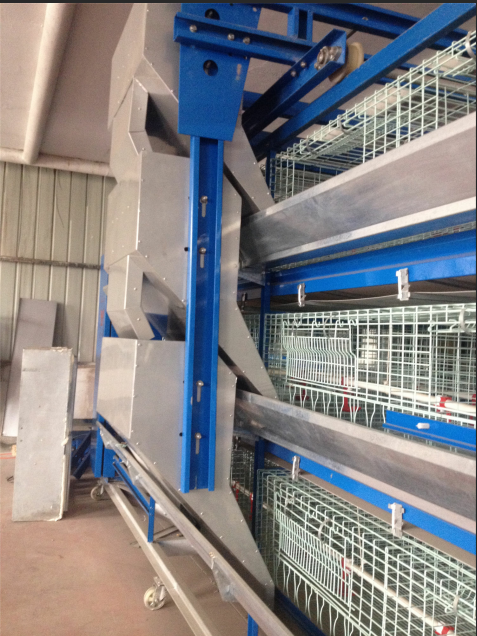Healthy culture technology of chickens in hot-dip galvanized layer cage
- font size decrease font size increase font size
The farmer raises the laying hens and establishes a good laying environment for the laying hens through scientific and rational hot-dip galvanized layer cage equipment and standardized egg laying management. It can effectively avoid some breeding risks, make the laying hens of the farmers more healthy and productive, and improve the economic benefits of the farmers. Today, the author introduces the technical points of healthy farming of several laying hens for reference by farmers.
1. Drinking water and feeding: Farmers should pay attention to water hygiene when giving water to laying hens. The quality of the water should meet the human drinking water hygiene standards. If the drinking water is not clean, it will easily cause the chickens to contract the disease. Drinking water equipment should pay attention to regular disinfection. The hens have two peaks in feeding during the day, 2 to 3 hours before turning on the lights and before turning off the lights. These two time periods should be kept constant, so feed at least 2-4 times a day, and add less feed each time to ensure that the chickens are finished. And there must be empty time, you can do not waste feed.

2. Chicken house disinfection: During the process of laying the laying hen, the residue of the manure, the water and the residue of the feed easily make the house produce a lot of harmful gases, such as ammonia gas, so the farmers should pay attention to the ventilation while ensuring the temperature of the house. And strengthen the disinfection of the chicken house, disinfect the various equipment on a regular basis, conditional farmers can bring chicken disinfection every week, do a good job in the chicken house to create a comfortable living environment for the chickens.
3. Chicken group lighting management: When the farmer enters the chicken house, the first day must ensure 23 hours of light, and then 0.5 hours per day, until 12-13 hours of light per day. However, farmers should pay attention to the inability to continuously give the chicks 24 hours of light, which will affect the immunity of the chickens. If the light intensity is 8-10 square meters, use a light bulb. You can use 100 watts in the first week and 40 in the second week. Tiles, from the third week of light intensity, the chickens see the feeding as the main basis.
4. Management of temperature and humidity in the chicken house: During the process of breeding the laying hen, the temperature is too high or too low, which will affect the quality of the laying hen. Therefore, the farmer must control the temperature of the house, and it is best to control the temperature of the house between 15 °C and 25 °C. At the same time, farmers should pay attention to the sudden rise and fall of temperature, and the airflow rate of the chicken house is too fast. It also changes the temperature of the chicken body, resulting in a decline in the health and performance of the chicken. The humidity of the house should be kept at 55%-65%, and the house should be ventilated.
The above four points are the four points introduced by the author, and the use of layer rearing equipment to raise the healthy breeding techniques of laying hens. At the same time, in addition to these managements, farmers should pay attention to the nutrients needed by the laying hens when selecting the feed for laying hens. The comprehensive nutrition is the key to the high yield of laying hens.

